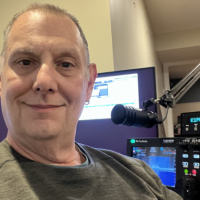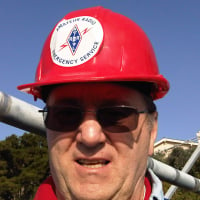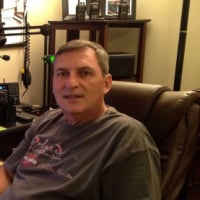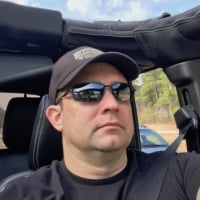SmartSDR v4.1.3 | SmartSDR v4.1.3 Release Notes
SmartSDR v3.10.15 | SmartSDR v3.10.15 Release Notes
The latest 4O3A Genius Product Software and Firmware
Need technical support from FlexRadio? It's as simple as Creating a HelpDesk ticket.
USB D-STAR BOARD
Answers
-
Peter, it plugs into the radio.0
-
All of the SmartSDR Waveforms are open source along with their corresponding client applications.0
-
Thank you, guys.
Well, that IS interesting then (if it plugged into the host "no so much", right?).
Anyhow, I just ordered one!
ETA: Apparently the USB device looks like a serial port (running at 460800 baud?) for demodulating the data. This is one of the modes supported by the DVSI chip itself, and the USB to UART interface on the ThumbDV is an FTDI chip. Very simple little device and very clever.
BTW, the same DVSI chip will also decode MotoTRBO, DMR, and NxDN. The chip is, unfortunately, not capable of full-rate P25 (P25 Phase I) decoding (it *can* do half-rate, for one channel of P25 Phase II TDMA decoding, however).
Nice!
Peter
K1PGV0 -
What does NDA stand for?0
-
Non Disclosure Agreement Everyone working with Alpha Software has signed a non disclosure agreement which prevents us from discussing anything until Flex officially releases the information to the public. Quite often I see leading questions being asked about new features or pending products that are in progress. Unfortunately because of the NDA, they can't be answered even when I know that the answers will make some very unhappy people extremely happy.0
-
Hi since it AMBE-3000 chip i assume it may do in future the Yaesu Fusion to ?
VE2OLM Marc .0 -
You gotta do what you gotta do0
-
Yes it will work with transverters0
-
The chip has the codec -- this turns speech into symbols and vice versa. Then those symbols have to be transmitted over the air. This becomes a data transmission problem. So at this point you need a modem that will send the data. For D-STAR a GMSK modem is used and the data that is sent includes the AMBE codec data along with the callsign data and a low-speed data stream.
The ThumbDV supports some 60 different rate and type of codec including the one from System Fusion. We then have to use the same modem and data bits that are used by Yaesu to ensure compatibility. We'll be looking into this to see what is required to make system fusion work as well. We do have a lot of other projects under way and so this make take some time.
Also because we are open-sourcing these waveforms, it would be fairly easy for someone that understands System Fusion to add this mode using our D-STAR code as a starting point. I don't know a lot about their modem yet so I'm not sure what the challenges there will be or even for sure if we'll do it, but we're certainly going to take a look at doing it.5 -
Thanks, Howard0
-
I just received my NW ThumbDV today! wink, wink, nudge, nudge, :-)
0 -
Ordered my ThumbDV from Flex.....now to get a xvtr!
0 -
Received mine yesterday. Already plugged it in the radio, just waiting for v1.5 now :-)0
-
I just checked my THUMBDV out and it appears to be the 200k version not the newer 400k version. I know this shouldn't bother us with hooking it up to the Flex, but if you want to try it with WinDV in the mean time this info might be useful. Tnx again for a wonderful product0
-
Another VHF-UHF AMBE-3000 compatible Mode that would be cool would be NXDN which we use here much more then D-Star because of the far less infrastructure, setup and registering required for Local, Linked, and world wide communications through Kenwood or ICOM commercial VHF and UHF Repeaters and a Raspberry Pi micro computer to control many repeaters on your network. The Kenwood and ICOM equipment are compatible in the 6.25KHz mode and would require transverters or the 6700 2M port of course.
Bret
WX7Y
0 -
Do you know where to get the modem for this mode (open source)?0
-
Not sure but I will see if I can find something out, Hope it's open source . Thanks Bret0
-
Just found this on google search http://forums.qrz.com/index.php?threads/nxdn™-specification-released.354454/ Thanks0
-
For those of you that have received your ThumbDV did you also upgrade your smartSDR to 1.5 or has that not come out yet? If it has come out what other changes are in the smartSDR 1.5 software?
Thanks0 -
Dave if your posting here you can see at the top the 1.5 is not released yet.
0 -
1.5 isn't out yet. Should be out sometime in september.
0 -
International DSTAR HF Testing Net – Winter Schedule –
Use your ICOM 9100/7100, or STAR Boarded non ICOM DSTAR HF, or the FLEX 6000 series radios with software 1.5 or better and the DV3000 card.
Here is some video of DSTAR HF Voice simplex on a 7100
We routinely have two way communications coast to coast and North to South, South to Canada, Europe and Australia. We have had two way contacts to Japan. And have been heard in South Africa.
We are on each band only for 5 min. or so as to spend less time, if the band is dead we move on earlier. You can go back to a good freq after the net.
MONITOR REF030C to coordinate. WE may need to move early or if the freq is busy. We do not want to step on any AM or SSB activity.We also use a web page to keep track of who and where we are at - http://hf.dstar-relay.net/
You also can check-in to this web site anytime 24/7 to find a DSTAR HF Ham to talk to.
We will have a PRENET for 30 min. before the start of the scheduled time. This PRENET is for ‘FREE FORM” contacts. One should check the web site http://hf.dstar-relay.net/ sign in and find a working freq to work on. When the net starts at the scheduled time, please join the net and follow the freqs.
DSTAR HF VOICE SCHEDULE
Sat PM 7:00 E (2400Z)
Sunday AM 10:00 E (1500Z Sunday)(Spend more time on each open band, and start on 80m)Sunday PM 7:00 E (2400Z)
Tuesday and Thurs night at 8:30pm E (0130Z Wed and Fri)
Check USB/LSB on freq to make sure the freq is clear.
SUNDAY AM, we start with 80m and work towards 6 meters.
h:00 - h:05 6 mtrs 51.180 DV for 5 mins
h:05 - h:10 10 mtrs 29.480 DV for 5 mins
h:10 - h:15 12 mtrs 24.938 DV for 5 mins
h:15 - h:20 15 mtrs 21.380 DV for 5 mins
h:20 - h:25 17 mtrs 18.148 DV for 5 mins
h:25 - h:30 20 mtrs 14.325 DV for 5 mins
h:30 - h:35 40 mtrs 7.285(or another open freq) DV for 5 minsh:35 - h:40 75 mtrs 3.880 DV for 5 mins Backup is around 7.300. THIS ALSO APPEARS TO BE AN AM FREQ
NCS will check the freq ahead of time to make sure we don’t step on anyone 3KC up and DOWN.
See how to do DSTAR HF with an ICOM at- http://www.youtube.com/watch?v=oGF-qkdoid4
"Digital voice is defined in the Commission’s rules as voice (i.e. phone), not data, per Section 97.3(c)(5) of the Rules." Check out the most recent comments by the ARRL: http://apps.fcc.gov/ecfs/document/view?id=7521063715
Kent
KQ4KK
0 -
look farther down in newer replies for the Winter schedule.
0
Leave a Comment
Categories
- All Categories
- 381 Community Topics
- 2.1K New Ideas
- 632 The Flea Market
- 8.3K Software
- 127 SmartSDR+
- 6.4K SmartSDR for Windows
- 185 SmartSDR for Maestro and M models
- 430 SmartSDR for Mac
- 272 SmartSDR for iOS
- 259 SmartSDR CAT
- 195 DAX
- 382 SmartSDR API
- 9.4K Radios and Accessories
- 40 Aurora
- 265 FLEX-8000 Signature Series
- 7.2K FLEX-6000 Signature Series
- 955 Maestro
- 56 FlexControl
- 866 FLEX Series (Legacy) Radios
- 927 Genius Products
- 464 Power Genius XL Amplifier
- 338 Tuner Genius XL
- 125 Antenna Genius
- 297 Shack Infrastructure
- 209 Networking
- 460 Remote Operation (SmartLink)
- 144 Contesting
- 788 Peripherals & Station Integration
- 140 Amateur Radio Interests
- 1K Third-Party Software





